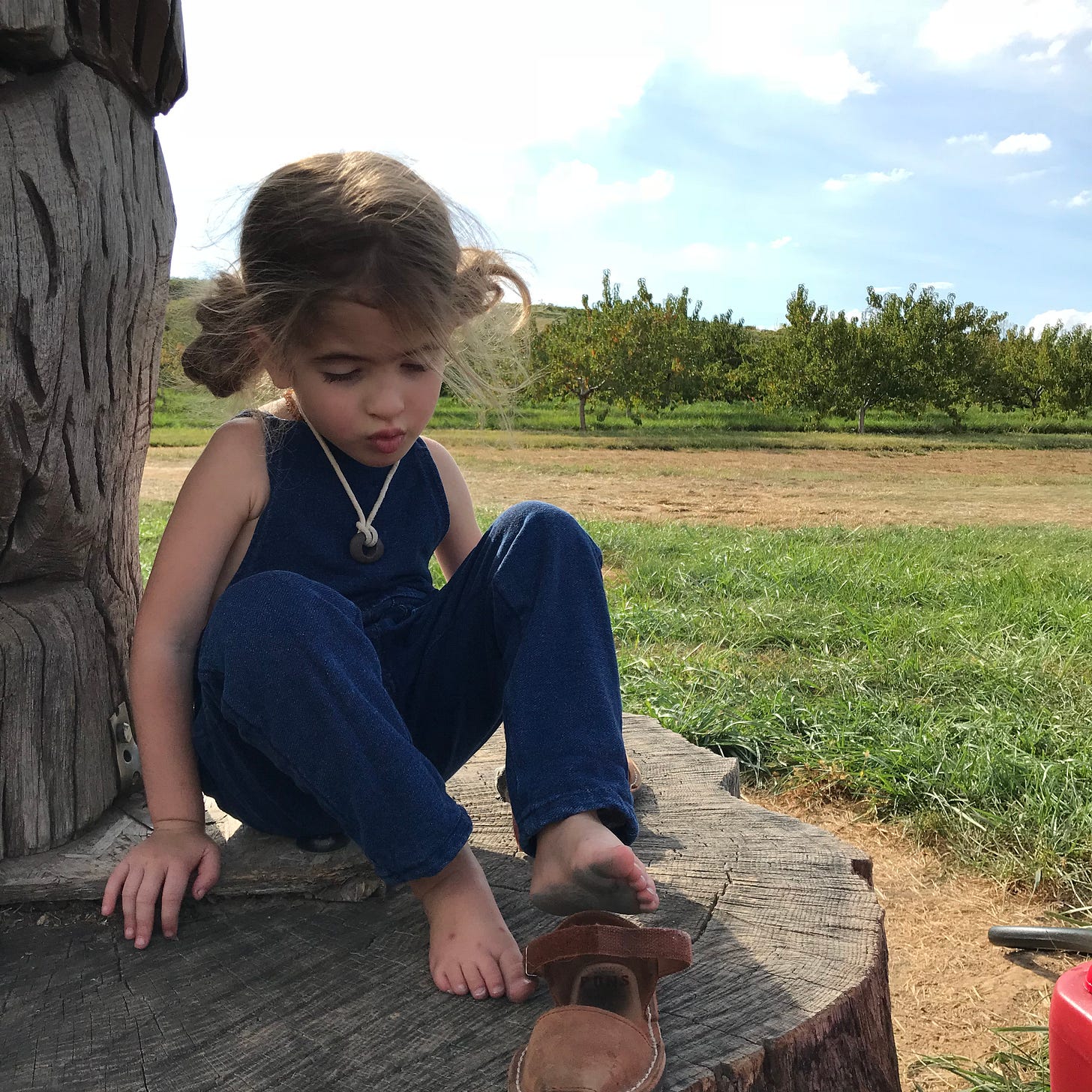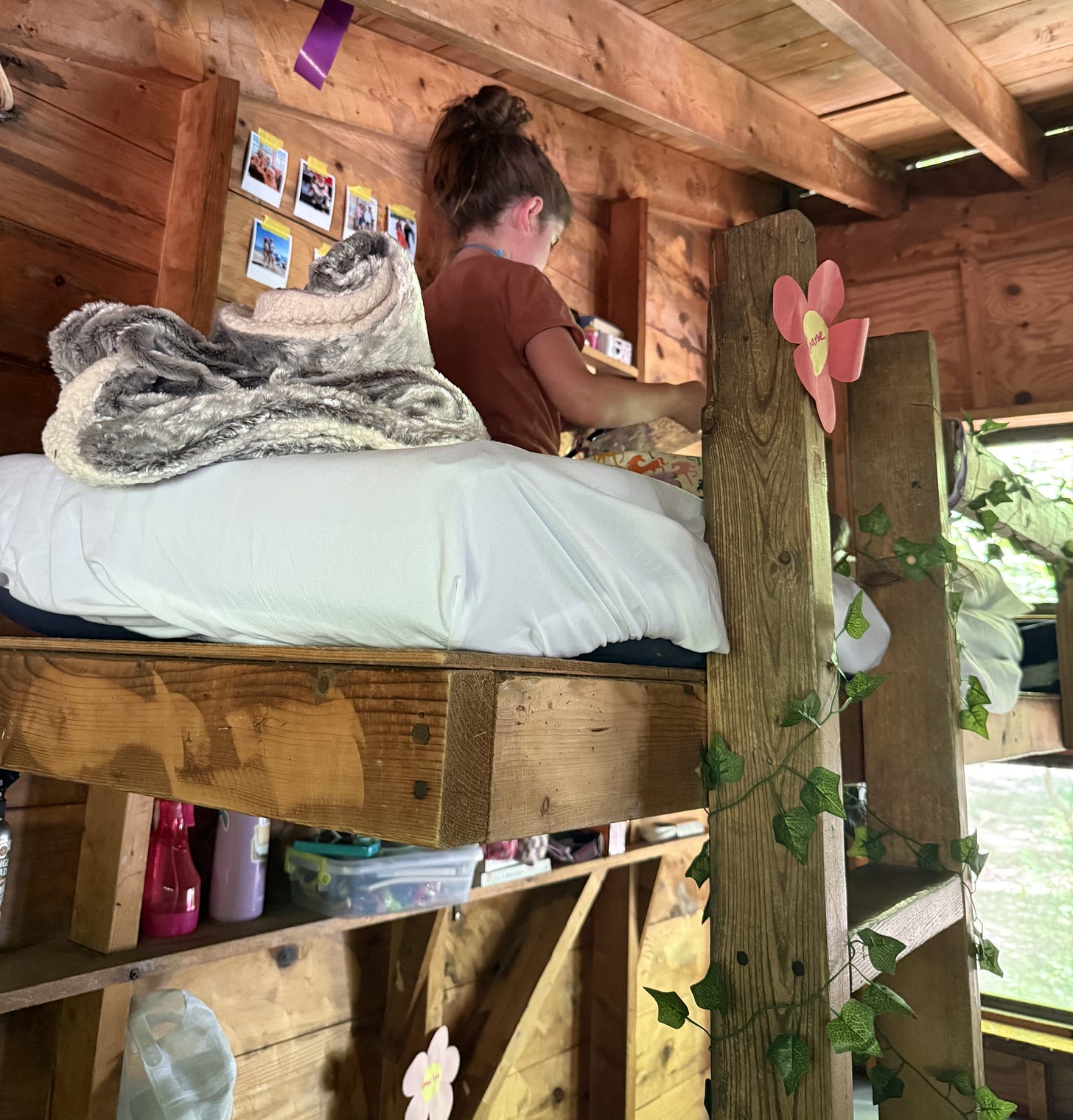Raising the Quiet One: What Helped Our Most Observant Kid Find Her Voice
Age-by-age strategies for building confidence in cautious kids without sticker charts, forced “thank you's,” or pressure to perform.
I used to walk away from preschool drop-off with a lump in my throat, hoping this would be the day my daughter didn’t cry. Other kids would run inside without looking back, while mine clung to my leg like we were acting out a movie’s final scene. It was brutal.
Now she’s twelve, off to her second summer of overnight camp. She kissed me goodbye without hesitation—not in a “get away from me” tween kind of way, but with the quiet confidence of a kid who knows she belongs.
People often ask how we got here. The truth? Slowly, and not without bumps. There were hard mornings, so much second-guessing, and a lot of tears—hers and mine.
From the start, she was different than her siblings. My older two were what I’d call “born brave”—one lit up every room, the other approached with quiet confidence. But my youngest? She preferred my lap to the playground. She watched from the sidelines. She stayed close.
As a mom, it worried me. Her sensitivity, her caution, her deep need for connection—it felt unfamiliar. But as an early childhood educator, I knew better. I’d worked with kids like her. I knew this wasn’t a problem to fix, just a temperament to understand.
And yet, my heart still squeezed with worry.
When I dropped her off at camp the other day, I couldn’t help but reflect—not just on her growth, but mine. I shared a quick update on IG, and longtime followers who’ve watched her grow from a quiet toddler to a powerhouse tween messaged me with the same question: How did this happen?
The other day, I came across a TikTok that I loved. A mom said, “My daughter isn’t shy, she’s just auditing your energy.”
…And that is the energy I’m bringing to this Substack post!
My twelve-year-old daughter is still becoming. But today, I’m sharing how we supported her, not by pushing her to be someone else, but by meeting her where she was and trusting she’d get where she needed to go.
What If “Shy” Isn’t a Problem?
If your kid is more observer than spotlight-chaser, here’s what actually helped us (no sticker charts, obviously):
1. We spent lots of time making her toys speak soft, medium, and loud! This gave her a concrete reference for what those terms meant. Adults were always telling her to speak up, so I showed her what that meant.
2. When she was small, I picked her up and let her see over the counter while I ordered or paid. It allowed her to see how these exchanges worked without the pressure to perform.
3. I encouraged her to communicate however she was comfortable. So, in a restaurant, I might say to the waitress, “My daughter will order by pointing to the one she’d like to have.” Then she’d point. Eventually, she began confidently speaking up for herself.
4. On the way to a social event, we chatted about what things she might like to talk about and with whom. She liked to tell people about our dog. That gave her the confidence to get started, and conversation and interactions flowed from there. Sometimes we gave her a photograph of our dog to bring with her. Having something to show people always helped her feel more confident.
5. I asked her older siblings not to speak over her or speak for her unless she asked them to. Whether we were at home or at the ice cream store, I didn’t want us to get in the habit of talking for her without it being intentional.
A few shifts I insisted on:
Made feelings normal — “You’re nervous. That’s okay. Lots of people do things nervously.” I didn’t try to convince her out of how she was actually feeling, with a “Don’t be nervous,” or “There’s no reason to be scared!” Instead, I leaned more towards meeting her where she was in the moment. Acknowledging it and moving on.
I didn’t talk about her in front of her like she wasn’t even there. If I needed to communicate information about her to her preschool teacher, I would call her or email her ahead of time. “Sloane takes time to warm up in new settings, like school. It’s important to me not to speak for her and not to force her to speak when she’s not ready. Here are some ways we encourage her to communicate in a way she’s most comfortable….”
We encouraged her to communicate how she felt best. I did not say, “SPEAK UP or I can’t get you what you want/need.” I bent down to her level and told the truth. “It is hard for me to hear you when you whisper, just like it is hard for you to say what you need in a bigger voice. Can you show me what you want by pointing?”
Role Play- We did a whole lot of role playing. As a former preschool teacher, observation is my superpower. I spent a lot of time observing her with her siblings or watching what she was watching at the park. When we got home, we’d act it out with her little Paw Patrol figures. I would replay the scene from the park and make one of the pups go over to the slide and start playing near the other kids. When my big kids took something from her, I would help her practice in an over-exaggerated way, “THAT’S MINE! GIVE IT BACK!” I didn’t worry about manners or tone, I just wanted to help her find her voice.
As a parent myself, I know it’s tough to decide when to push and when to trust. It’s hard not to get stuck in the comparison trap or get clouded by the what-ifs. The way you support your slow-to-warm toddler is not the same way you’ll support your elementary schooler. Below, I have broken down actionable strategies to meet you and your child where you are today.
Age-by-Age Tools
💛This next part is for the parents who want specifics. The part I wish someone had written when she was little: The exact tools we used, age by age, to build confidence without forcing it. Subscribers, this part is for you💛
Keep reading with a 7-day free trial
Subscribe to The Workspace for Children to keep reading this post and get 7 days of free access to the full post archives.






